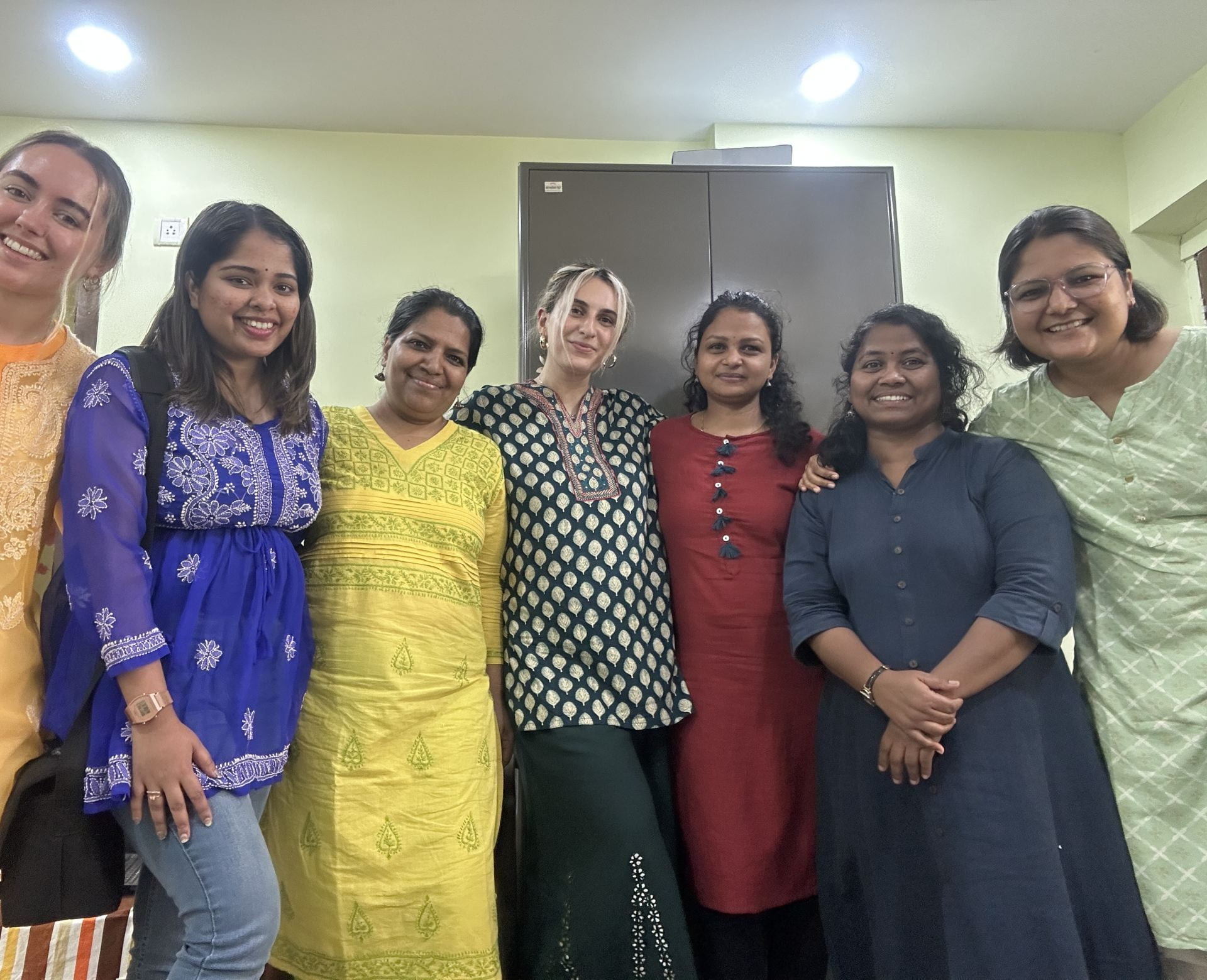Haere Mai and Welcome back to the Mumbai Diaries everyone!
Whilst I’d love you to give a full run down of the past three weeks here, I will do my best to give you the standout memories over the halfway mark! I’ll start right at the beginning of our trip to set the scene for you a little.
The honking cues here are a little different to those back home. The driving is also slightly different, I’m not entirely sure what the road markers are for here but it’s not always to stay between them. My first interaction in India, although I didn’t know it at the time, set the tone for my mindset about my next six weeks on the Prime Minister’s Scholarship experience. It was something I mentioned in my first blog but the significance of it has really been made evident the longer i’ve spent here. We were weaving through traffic on that first drive from the airport to our accommodation and I gripped onto the handles in the taxi and let out a little squeal as we narrowly missed the motorbike next to us.
The driver Manesh turned around and said “Ma’am, you are in India now, you must have a free mind.”
In hindsight, I think that is best thing to say to someone who’s touched down in Mumbai, “you must have a free mind.” So I’ve taken that with me, and I’ve used it for when I’m learning new things at work, when bartering on the streets with the stall vendors, and as is the case with all the amazing people I’m here on this experience with, the free mind is also used for giving things a go, even if it means that our adventurous palettes have lead us to become perhaps too familiar with the term ‘Delhi belly’, resulting in nine out of fifteen of the group missing their first few work shifts!
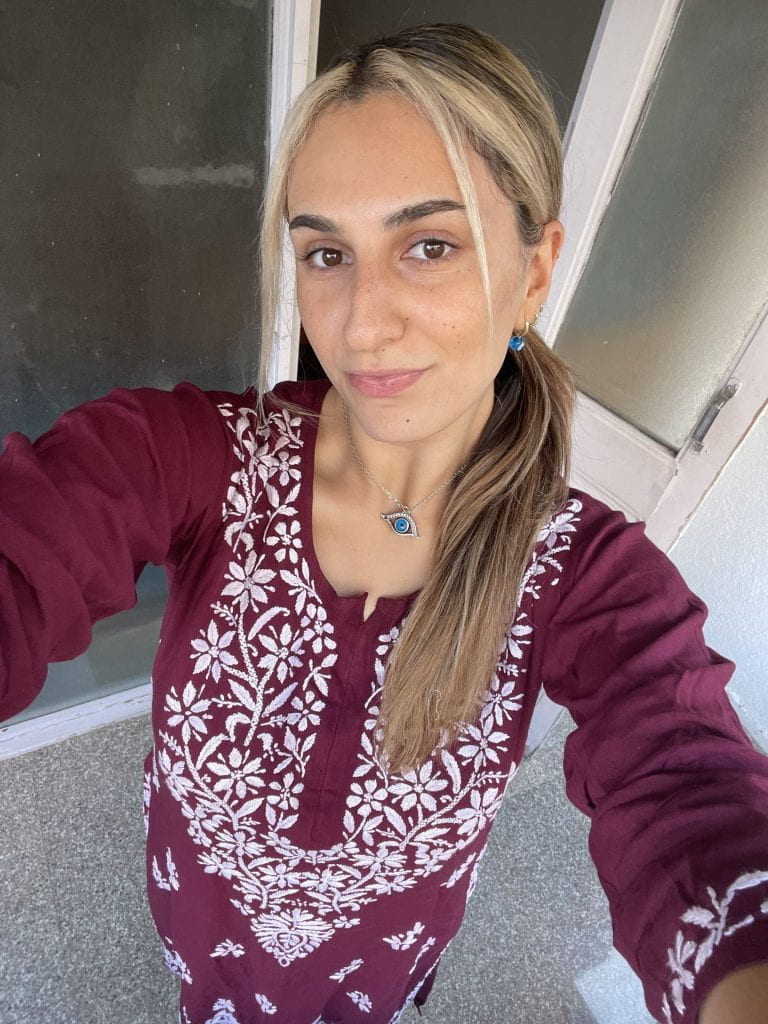
New Delhi and Agra Adventures
I perhaps got too confident and fell victim to the illness later than the rest, confronting it on our first weekend getaway, rather unfortunate timing. Whilst in the gorgeous New Delhi, my lovely friend Jana and I were…..not at our loveliest… when we had to drive the four hour van journey from Agra (where the beautiful Taj Mahal is located), back to Delhi, at the peak of our nausea, just before we were set to take our flight! As Joelle and Angelica put it “You guys actually looked a shade of green”, but it’s okay, we move on and after a Sprite, some electrolytes, some anti-nausea and Panadol, the nausea subsided and we boarded the flight back to Mumbai!
Agra and Delhi were beautiful though, we managed to organise a weekend getaway to visit a different part of India from the Mumbai we were interning in. I don’t think anyone can really prepare you or describe the Taj Mahal well enough, nor even take photos accurately enough to depict the beauty that it emits. As you enter, there is an archway that you must go through in order to even be in the vicinity of the wonder, and as soon as I got a glimpse of it, I had to put my phone down and genuinely stand back in awe at the beautiful building. Our tour guide, who insisted we call him Ali Baba, gave us a run down on the history and significance of the Taj, an Islamic building commissioned by Shah Jahan in memory of his wife in 1631. There really is no doubt as to why it’s named one of the seven wonders of the world, and its maintenance and upkeep is extremely impressive, especially considering it is visited by around 6 million tourists every year. I don’t think it will be anything any of us will forget anytime soon – but the feeling of seeing something that you’ve heard about, and read about, and watched documentaries about for years and years, is indescribable- saying it’s incredible just doesn’t scratch the surface. We were also lucky to see it at sunset, so it was the perfect time to capture it at its absolute prime – every engraving, every gemstone, every corner of gold was a sight to behold for sure! After our Taj Mahal visit, we were lucky to go to the actual studio where they do the gemstone repairs, the sanding, and the creation of the tiles that make up the Taj. Each corner and engraving is done so efficiently, and we were able to hold some of the gems and tiles that they use to repair the Taj Mahal too so that was a great experience. That weekend, we also saw amazing artefacts like the Qutab Minar, the Red Fort, and the India Gate – truly beautiful sights, of which people across India, as well as the rest of the world, travel hours and days to see! We are so fortunate to be able to do these trips on our weekends, but the real reason we are here remains to be the awesome internships that we’re undertaking over the 6-week period – so let’s delve into that a little more.
PMSA GROUP TAKES NEW DELHI AND AGRA
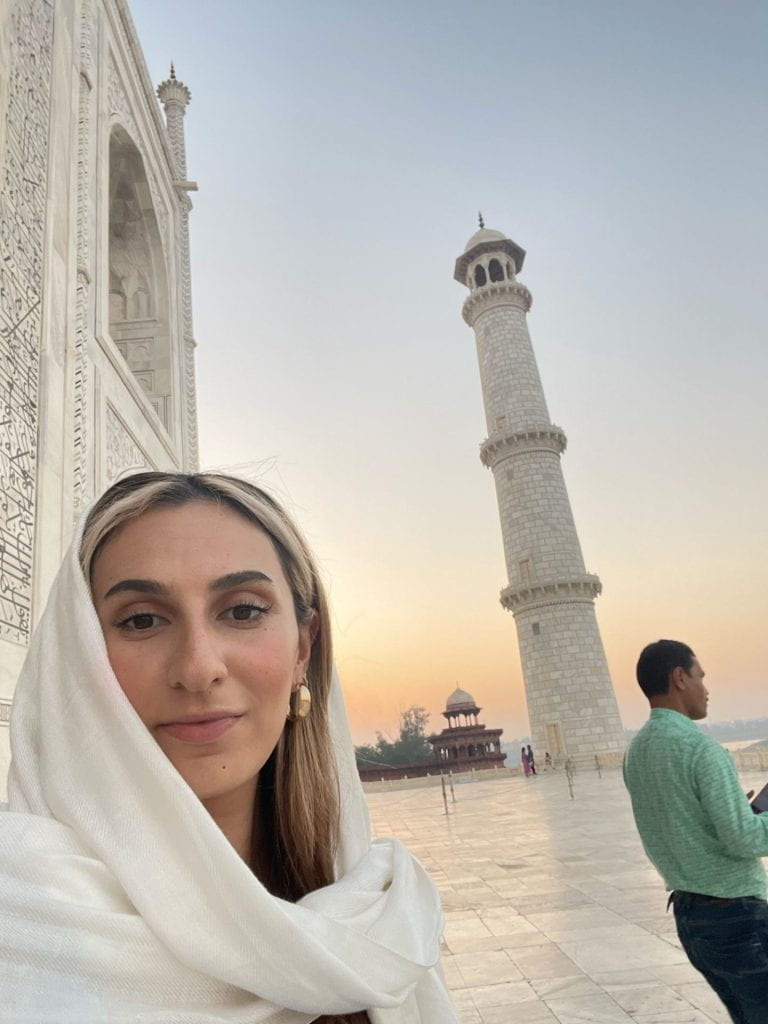
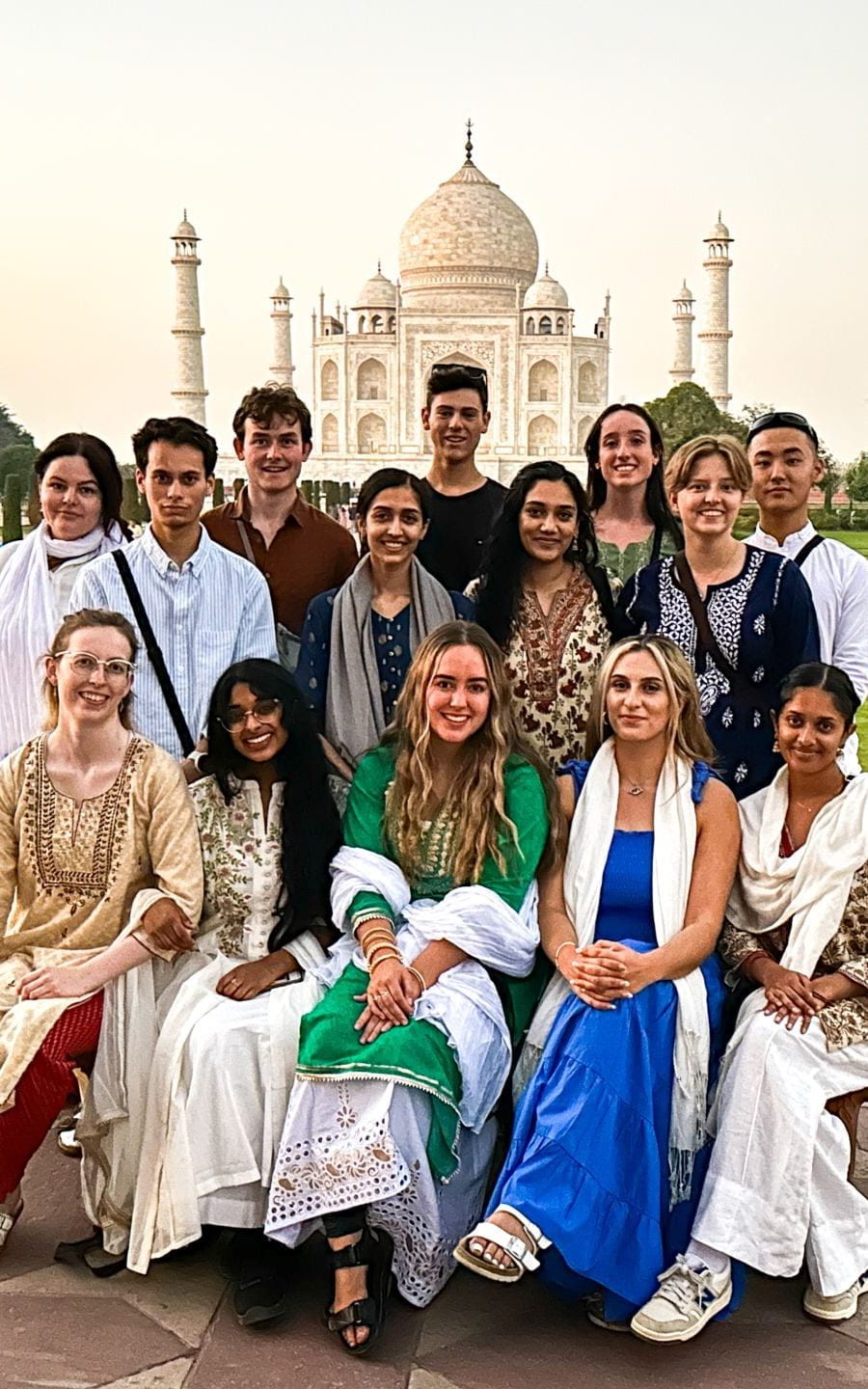
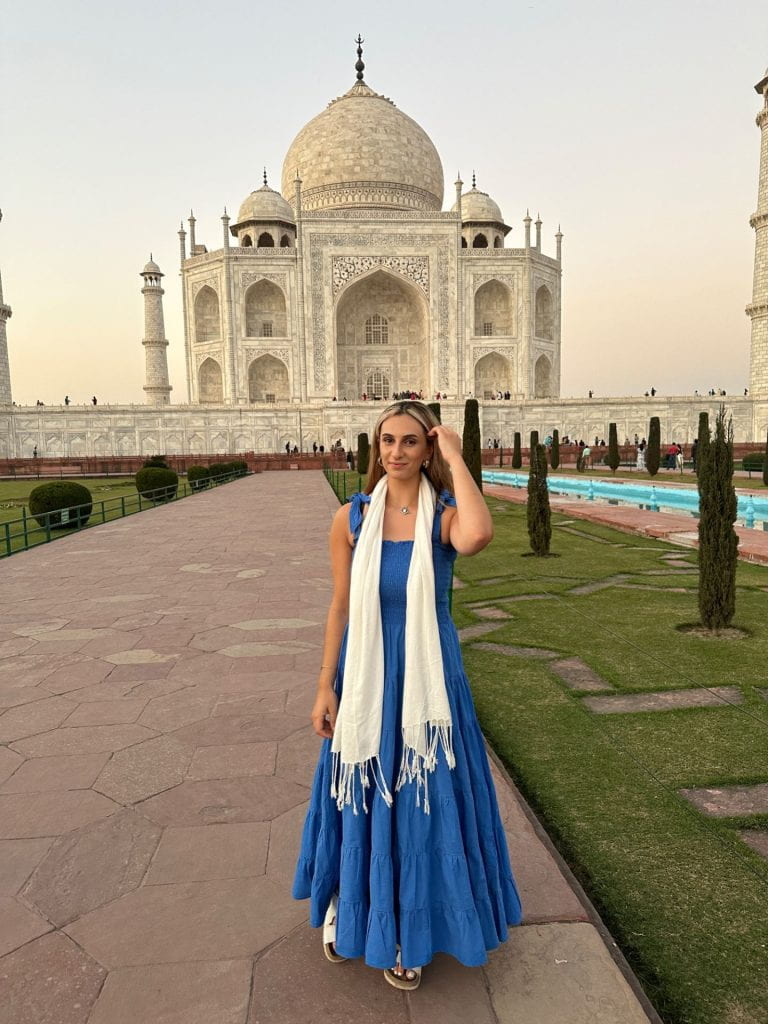
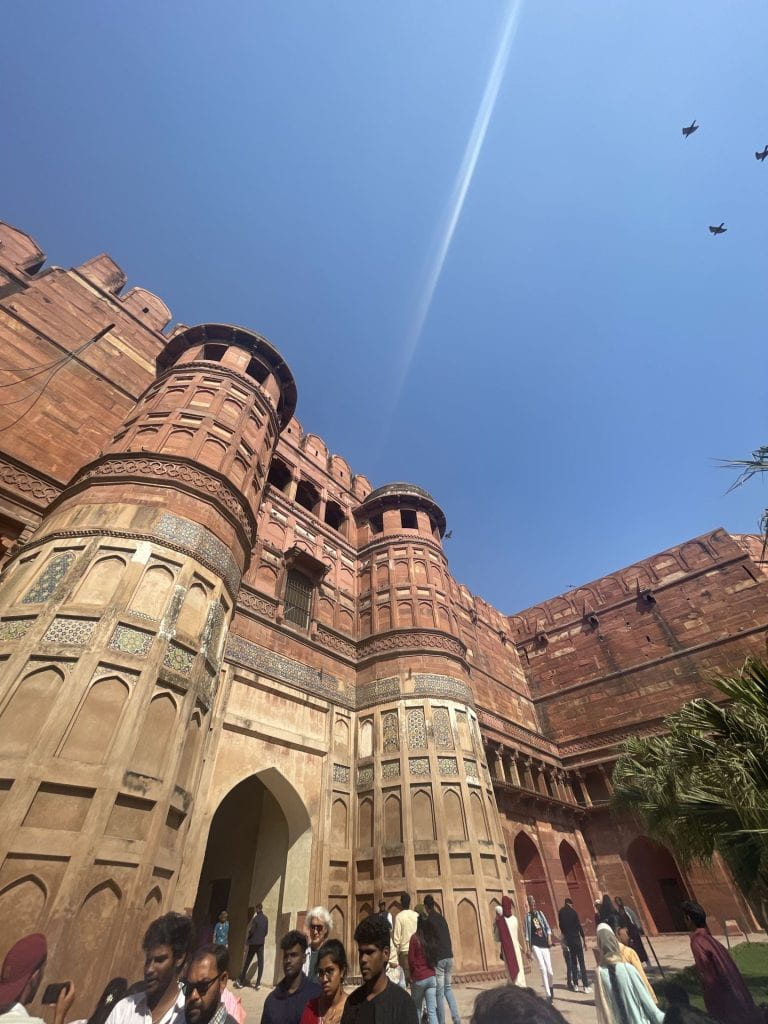
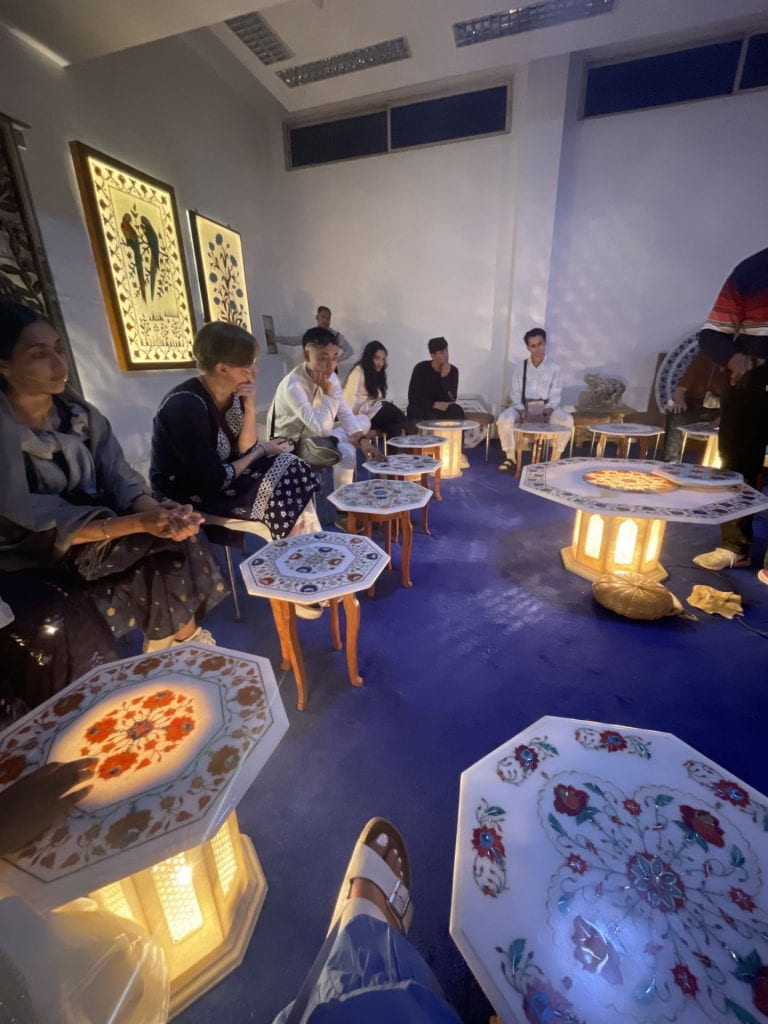
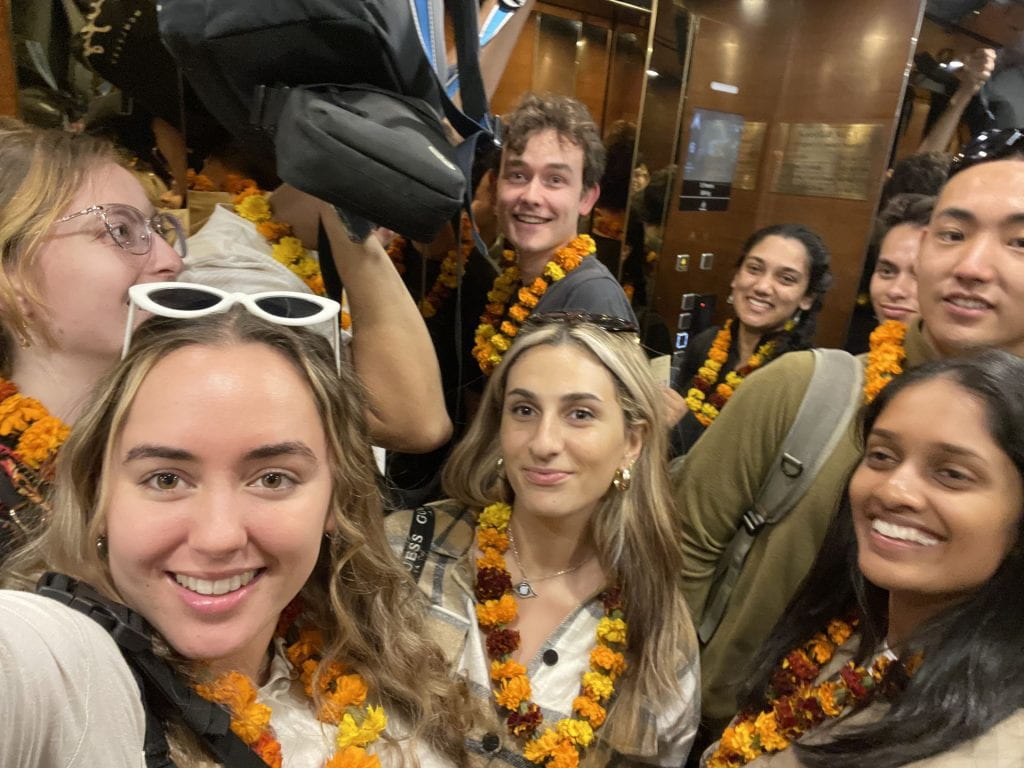
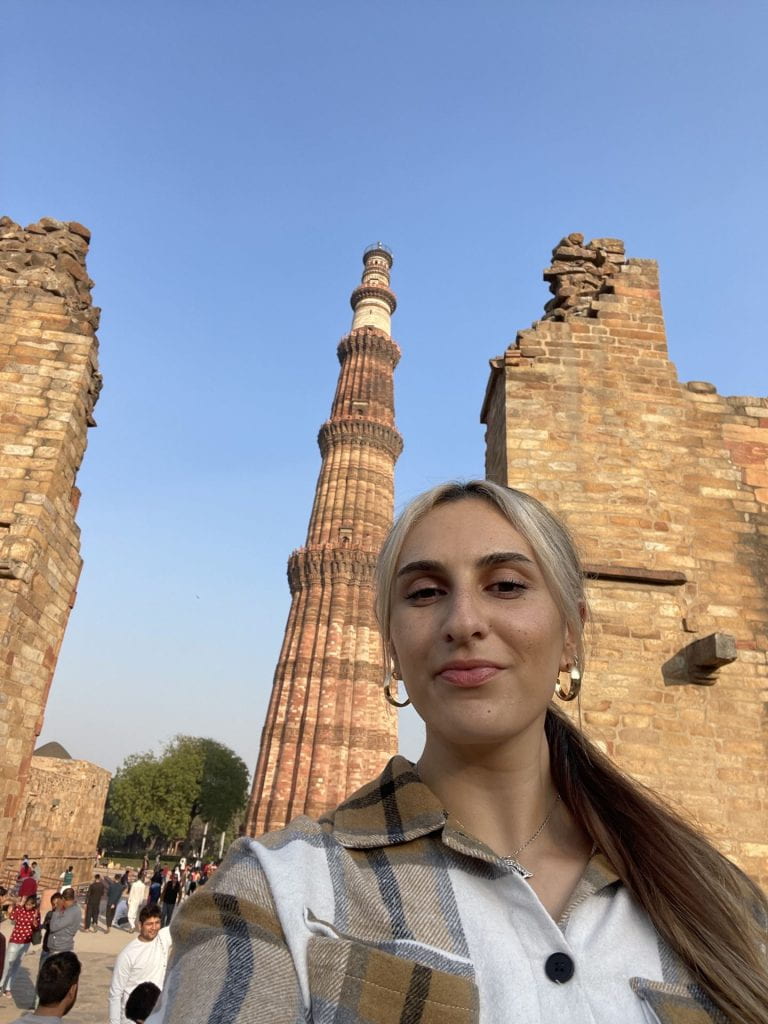
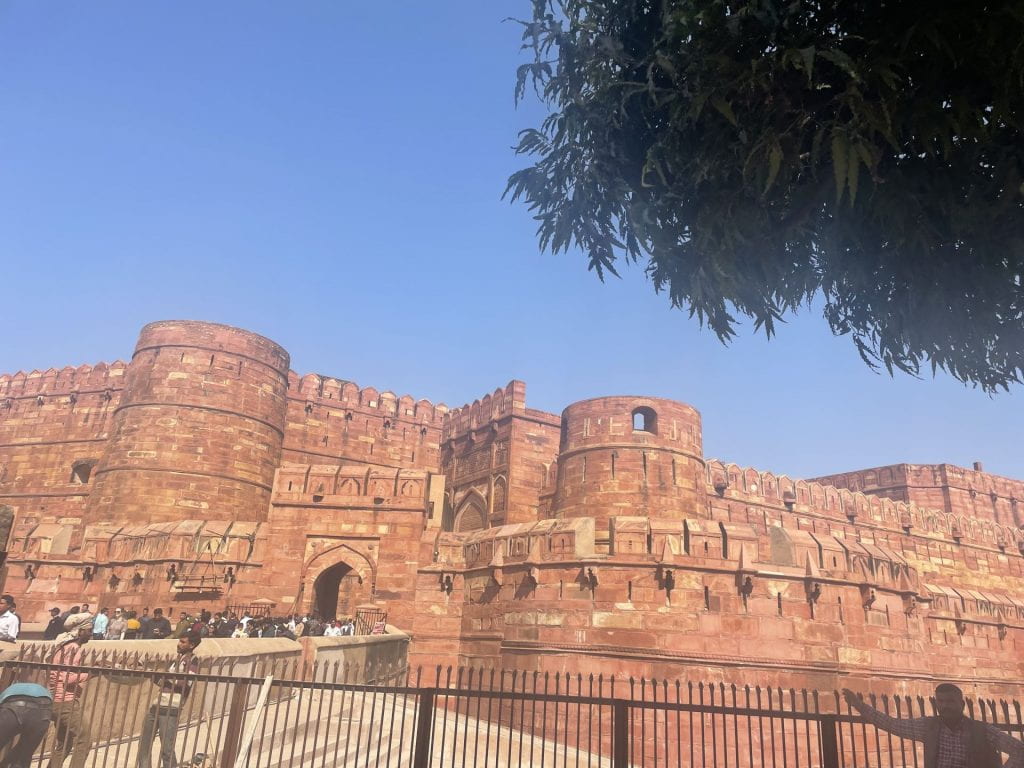
INTERNSHIP AT URJA
I’m very fortunate to be interning at both the Urja Trust, and the New Zealand Consulate – the latter which I’ll touch on in a bit more in the next entry! The first and last few weeks of my programme were spent at Urja- a shelter for women who have fled their previous home situations, whatever that may be, and are making the brave decision to navigate a new life. It’s been a privilege to see how strong, how brave, and how driven these women are in order to break damaging cycles. It has simultaneously been a real eye opener to understand the laws, policies, and systemic structures that Urja Trust must overcome to even be able to lend a helping hand. There are a lot of hidden challenges, and unknown barriers that the organisation themselves must overcome in order to even get things like funding, something as simple as the way they frame their proposals and reports, have to be very well thought out and worded correctly so to get the right approval. This is only one hurdle, but irrespective of the challenges, the amazing staff are so committed to giving the participants autonomy over their decisions. Urja is amazing in that they focus on ensuring the participants are fully in charge of their trajectory, merely providing them with a shoulder to lean in order to build that path. A lot of these women have to deal with the justice system as part of navigating their new lives, so we visited the police station and courts in Mumbai. We were allowed to go into a court room and see how the judges operate- particularly interesting in that all case notes are handwritten, so there were just piles and piles of files that were stacked upon each other and somehow, there is a system to sift through the cases when one needs to backtrack from however far back!
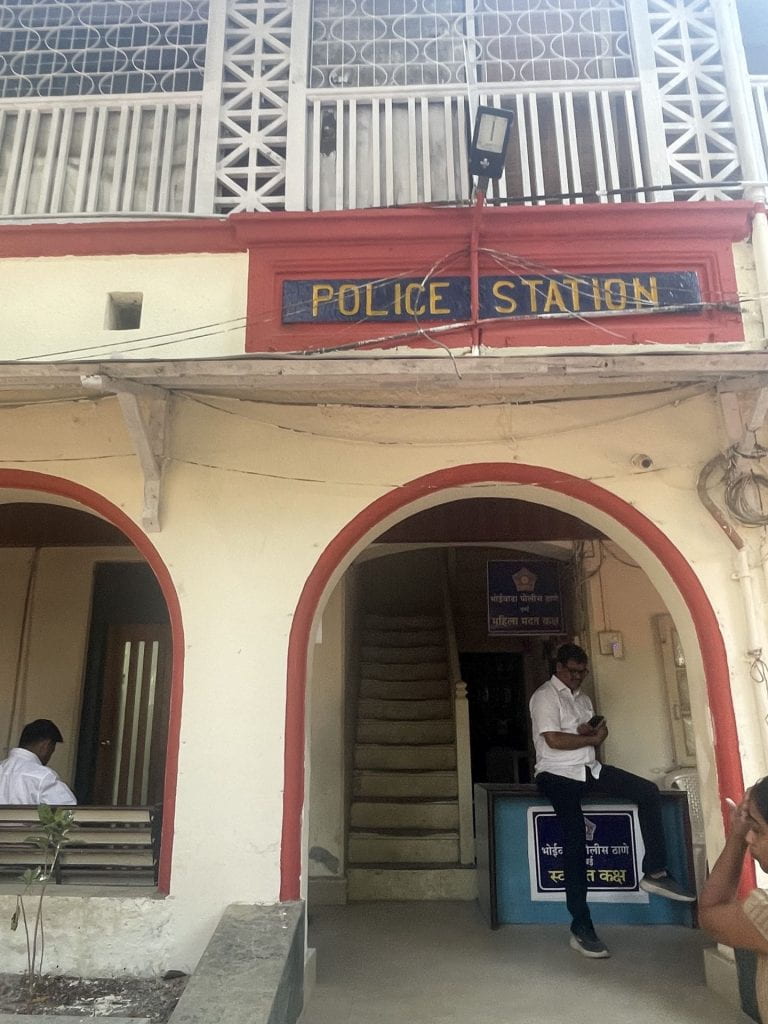
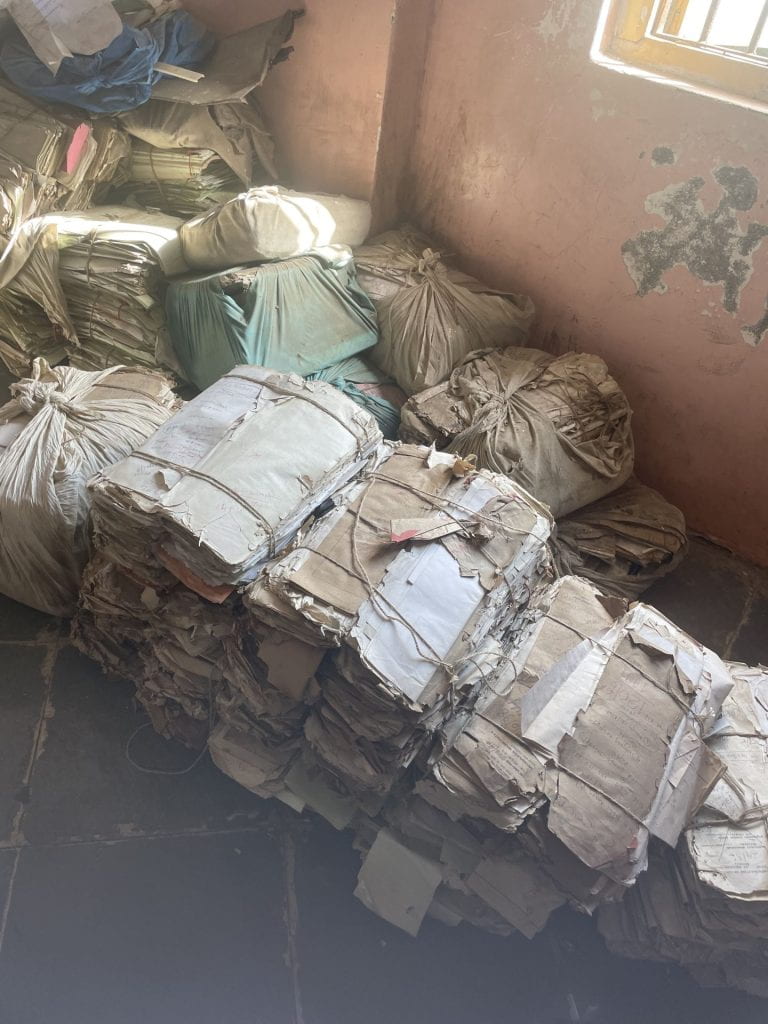
Urja is amazing in that it also host seminars and talks with companies and organisations such as the police, to inform the community about the prevalence of homeless women’s struggles, and how as a society we can do better to prevent societal stigma and stereotypes that result in women becoming homeless in the first place. It’s amazing because Urja has extended beyond their small Dadar office and are linked with the train railway officers and local police to help spot women at stations, or on the streets – working as an entire community to ensure that women are safe. After about 2 weeks of their initial arrival at the Dadar crisis shelter, the women head to the development shelter in Chembur and are given a set routine, where there are rosters for cleaning and cooking whilst simultaneously working at their chosen jobs or studying. After about 6 months, they move on to living in group homes, where they continue with their jobs and lives Urja has supported them with. was fortunate to go visit and spend time at both shelters during the internship, and even led a jump jam session at Chembur with all the women, dancing to the Macarena, the Cha Cha Slide and a Kiwi favourite- the coconut tree song! By the end of the day, I did get coined the name babysitter after one of the babies refused to return to her mum after she called her back, I promise I gave her back! It truly is such a beautiful atmosphere though, and the shelters do amazing work to get these women back on their feet, allowing them to do the mahi they want to do and live they lives they choose to live.
URJA TRUST- CHEMBUR SHELTER
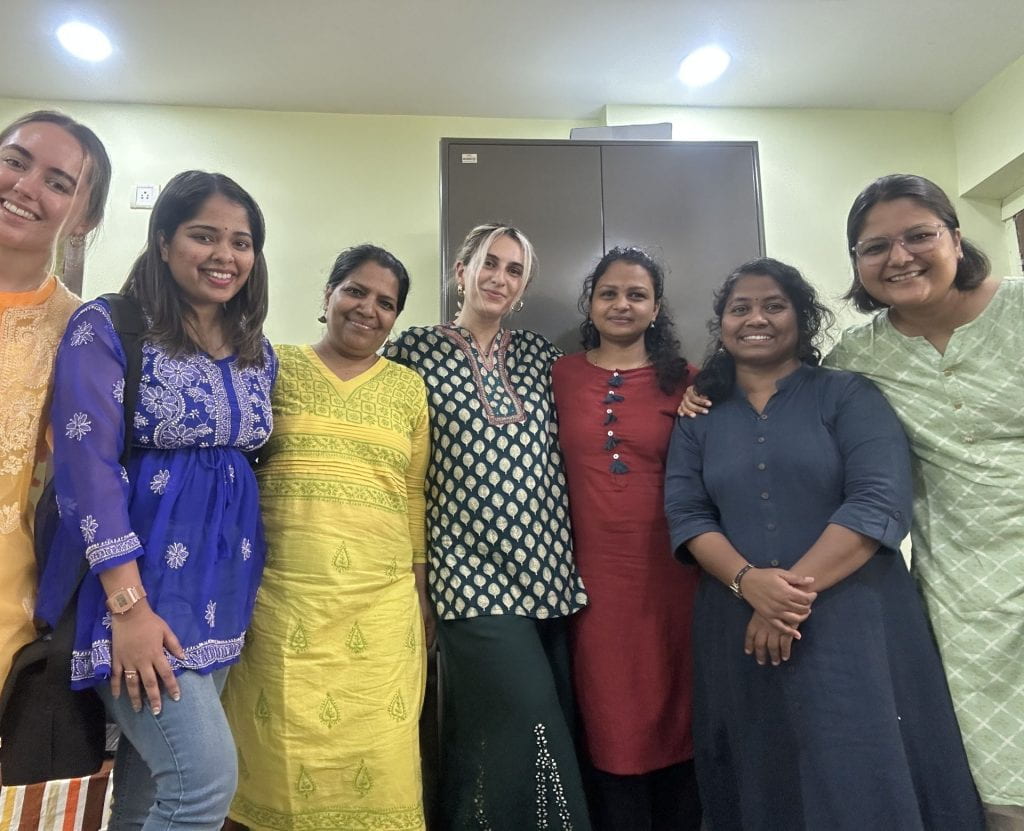
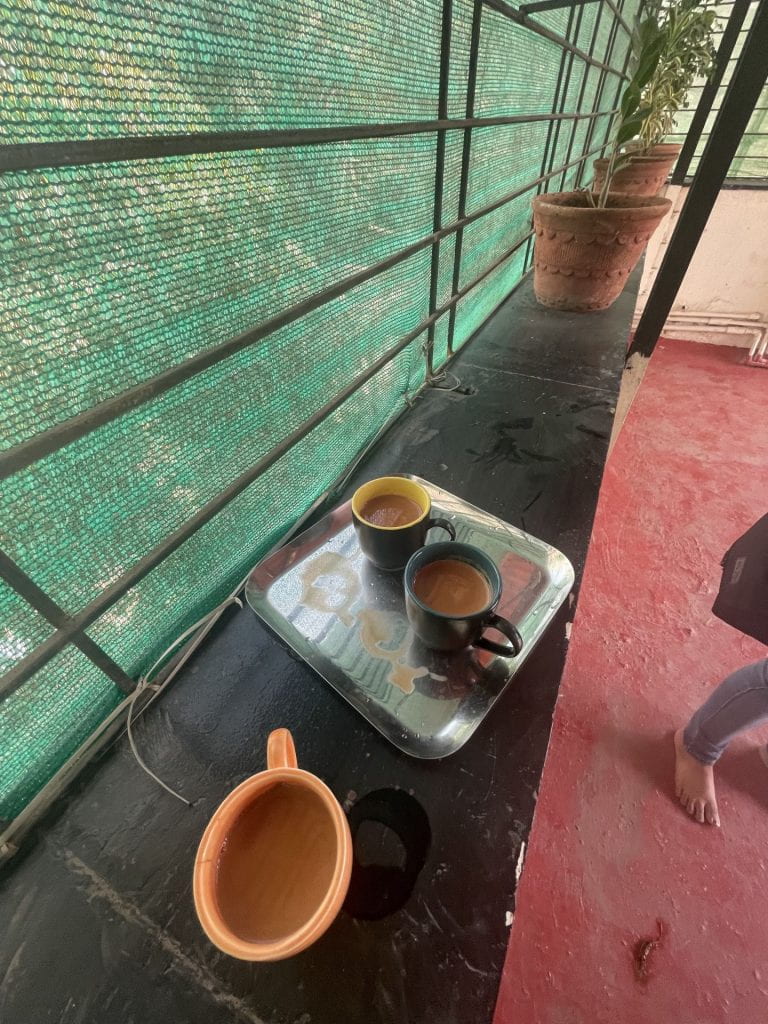
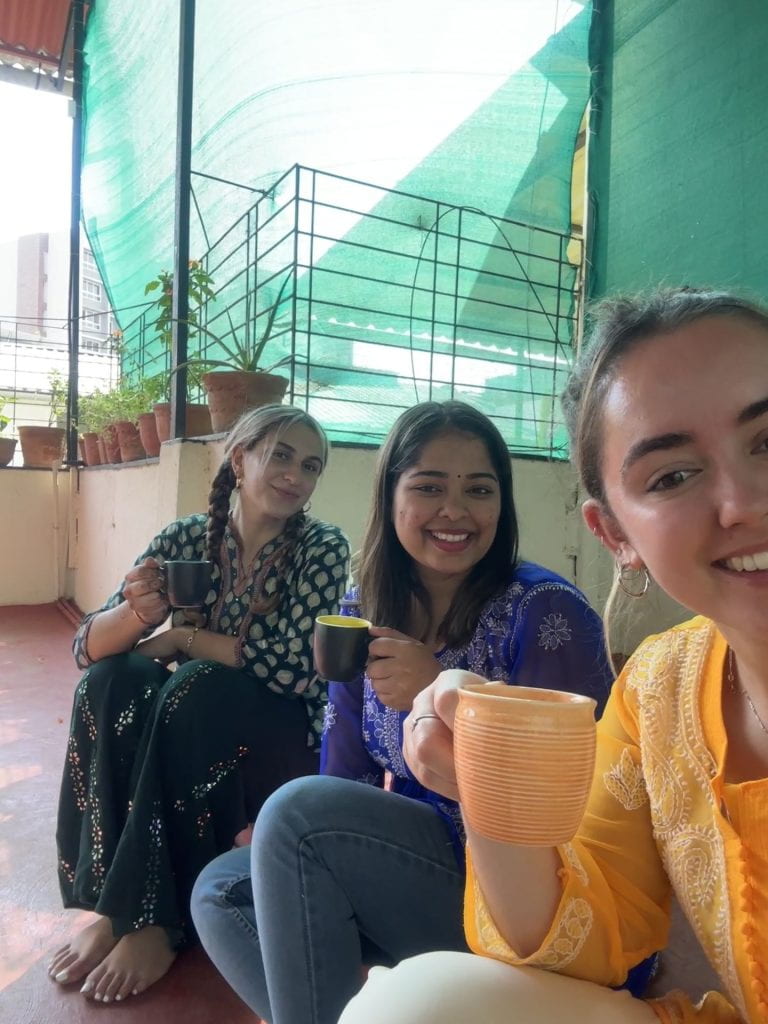
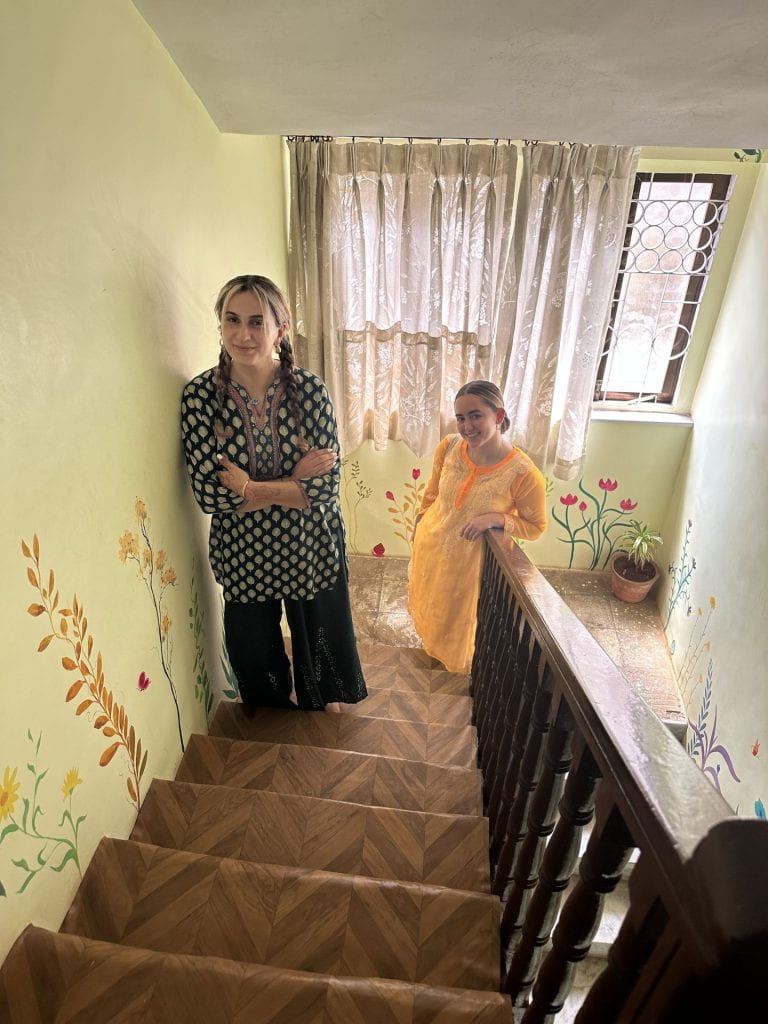
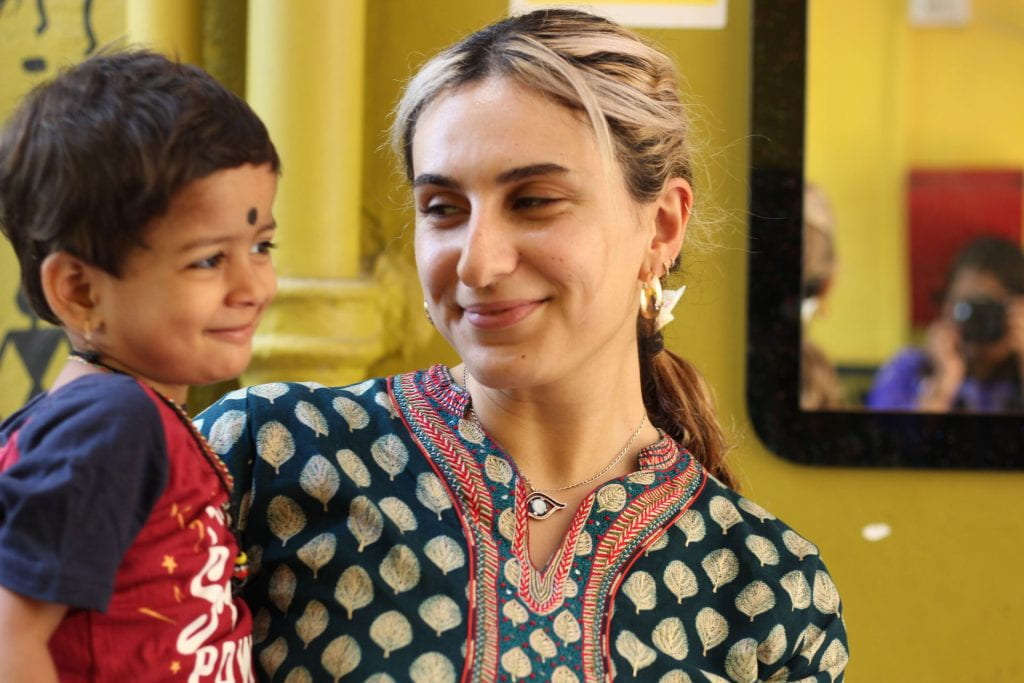
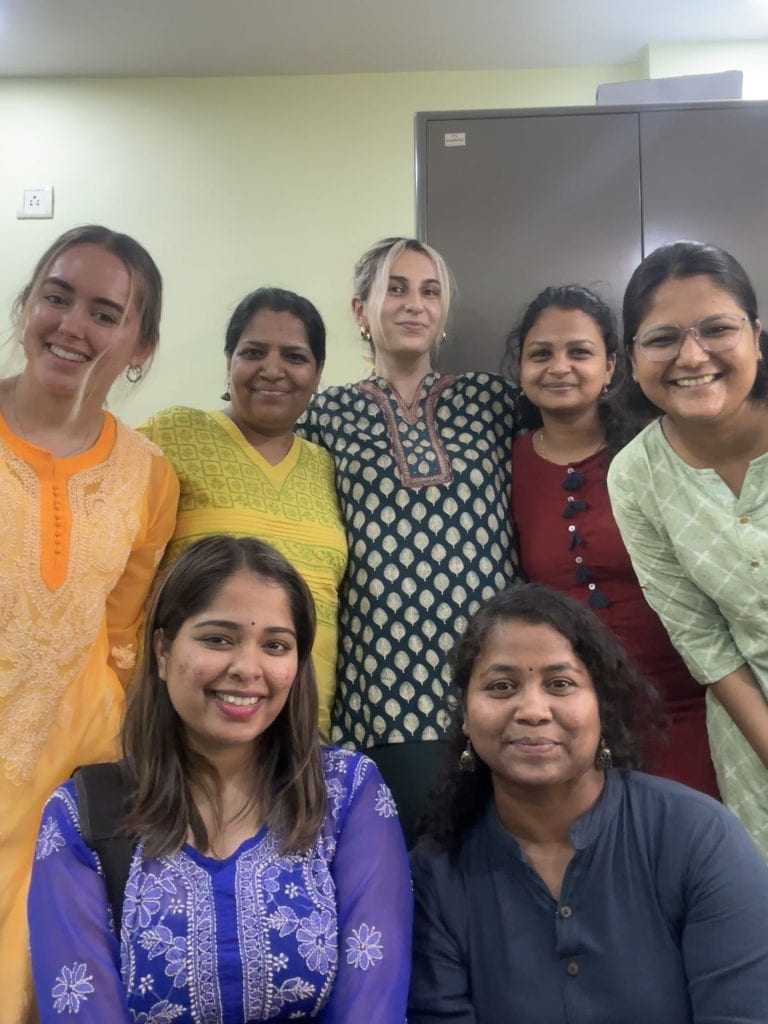
It must be acknowledged that there are also the women who work to make this happen who are truly so inspiring. I have learnt so much from them and it is genuinely not hard to wake up in the morning to come to work at Urja because the environment they have make it feel like a home away from home, within 10 minutes upon arrival, the gorgeous Gita makes us all a chai, and although her English is limited, and my Hindi is yet to be impressive, the love we have for each other can be found in that smile after I take my first sip every morning. There is a sense of true passion for the work they all do at Urja, and it genuinely is infectious, the power that we have as humans to make change, is evident in this small office in Dadar, Mumbai. I am very fortunate to be around such strong, powerful and justice-driven women, because I have seen with my own eyes, how much of a difference even one passionate person, or staff member, can make to the entire trajectory of another woman’s life.
TRIALS AND TRIBULATIONS
As amazing as it has been working in the office, you also see trials and tribulations with the social and cultural contexts here that aren’t common in Aotearoa. Understanding the hurdles that women have to go through to even get a fair shot at building a life, things like documentation that the women require in order to get jobs however not being able to because they have left identification forms at the house they fled, or having family abandon them because of the stigma that comes with a daughter wanting to marry into a different religion. It is not work you are confronted with everyday back home, and there are different challenges that I have learnt about in the Indian legal system that are not mirrored in our system back home, but it has taught me to think beyond the frameworks I am always given, and outsource solutions, contingency plans and proactive responses to situations that I am not familiar with from the outset.
You learn a lot about the world but importantly you learn the skills to adapt and work around situations you haven’t been confronted with previously. The sensitive, yet stable approach that Urja uses to ensure the participants feel both safe and supported, and heard but guided, is something I will cherish and relay in the work I do at home, but also the everyday encounters that I have at home too. I think whilst our cultures are different, the root of our work, and our passion is the same in that it is about the people. He Tangata, He Tangata, He Tangata- it is the people that are at the centre of everything we do.
Over the weeks I’ve been there, these women have become more than colleagues or participants of the shelter, they’ve become my friends, genuine friends. This last week a couple of us went to the Kala Ghoda Arts festival going on in Mumbai after work, and we ran into the ladies from Urja at the festival. It was the most amazing thing- we were all laughing at how fate brought us together, in a city with 24 million people, to run into your work colleagues at an art festival at 10pm is only magic that Mumbai can achieve. Our co-worker Ovee also took us out for falooda (amazing Indian ice-cream) at a place in Mahim called Baba Falooda, the most delicious flavours are available and the cup is full to the brim with the ice cream, vermicelli noodles and chia seeds. So much so that honestly, you’d be lucky to even THINK about dinner afterwards, let alone consume it! It is genuinely so lovely to be able to form bonds and grow so close with people who a few weeks ago, you would have walked past if you’d seen them in the street!
How do I take this back home?
I do think the biggest takeaway for me from this trip though is combatting the media narratives we’re spun about India sometimes. It is so different to what I’d expected, the first and second day Naveen and Mala, our GCC coordinators hosted a beautiful orientation where our preconceived notions were absolutely dismantled and we were taught about the community driven initiatives to educate more than 80% of the population, learnt about India’s self-sufficiency during the pandemic in administering vaccines and food parcels, and also learnt about how communities were creating their own transport routes to ensure everyone was safe and taken care of. It just goes to show again, He Tangata, it is the people at the centre of everything. My last day at Urja brought on unexpected waterfalls of tears, I didn’t really comprehend the fact that it would be an emotional farewell at the end but after knowing these women for six weeks, it is almost impossible not to build such strong, wholesome connections with each other, particularly considering the type of mahi we did together. I will always cherish my time at Urja and hope that I can continue to support and do some work for them in the future, even if I am not physically in the Dadar office. It was truly a privilege to be able to be a part of that internship programme and I could not recommend enough how amazing the work they do at Urja is, even if you are keen to have a read a bit about what they do for these women and how they do it- their website is linked below so don’t hesitate to reach out!
I hope my attempt at reciprocating the kindness I’ve been shown on the trip is even a tenth of what the people here have shown me, it has truly been a privilege and I already cannot wait for my next trip to India – even if I haven’t left yet, it is somewhere I will always have time for.
